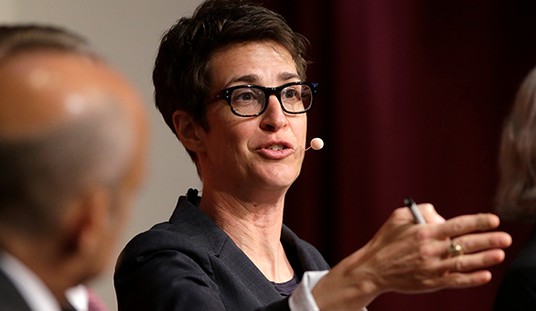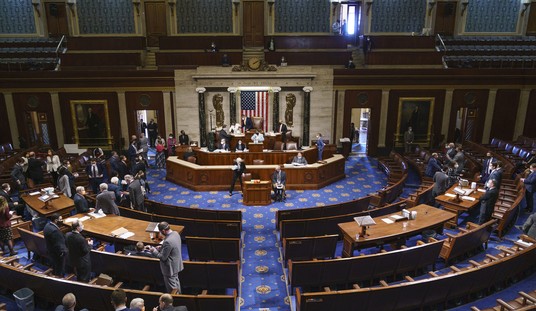The following remarkable statement now appears on the NOAA (National Oceanic and Atmospheric Administration) site:
For detecting climate change, the concern is not the absolute temperature — whether a station is reading warmer or cooler than a nearby station placed on grass — but how that temperature changes over time.
The root of the problem? NOAA’s network for measuring temperature in the United States has become corrupted by artificial heat sources and other issues. These problems introduce warm biases into the temperature measurements that are then used by the government and others to support manmade global warming. So as a reaction to criticism about these problems … NOAA now claims that the accuracy of the measured temperature no longer matters!
Let’s take a closer look at this amazing statement to see what it actually says:
For detecting climate change, the concern is not the absolute temperature …
Are they truly saying the accuracy of the temperature readings don’t matter? Yes, they are! But why?
The NOAA climate measuring network is so broken there is literally no way to fix it. Reacting to criticism of this annoying fact — and to cover up its significance — NOAA now says accuracy simply doesn’t matter, the temperature reading itself is not as important as the trend. This is clearly a deceptive political statement meant to distract the reader from the truth.
Of course the accuracy of the temperature reading matters!
Remember, a warming of only one degree Fahrenheit over the last 160 years is what the warmists claim to be evidence of manmade global warming. (And of course, half of that warming occurred from 1910 to 1945, before they claim the presence of any significant human influence.)
Temperature changes of tenths of a degree are being used to justify dramatic policy directives by the Environmental Protection Agency, dictums that would profoundly alter life as we know it: taxes levied on virtually anything that produces carbon dioxide. But it’s not only the accuracy of the temperature that is in play. If the temperature readings are off by a few tenths of a degree, this could significantly affect the longer term trend as well. If the temperature trend starts from an artificially elevated reading, the end result will be an artificially inflated measure of any global warming. The slope of the trend itself could be exaggerated by inaccurate temperature measurements.
So what exactly is wrong with NOAA’s temperature readings?
NOAA has five classes of climate measuring sites. The best sites, categories 1 and 2, require the site to be placed over grass or low local vegetation. According to section 2.2 of NOAA’s Climate Reference Network (CRN) Site Information Handbook:
The most desirable local surrounding landscape is a relatively large and flat open area with low local vegetation in order that the sky view is unobstructed in all directions except at the lower angles of altitude above the horizon. …
[For categories 1 and 2 there can be] no artificial heating sources within 100 meters (330 feet). …
[For the lower quality stations 3 to 5 there must be] no artificial heating source within 10 meters (33 feet).
The integrity of the site as a reliable climate measuring station is completely dependent on these criteria. Is the government adhering to its own standards?
In a landmark 2007 research project to determine the quality of the United States climate measuring network, meteorologist Anthony Watts set out to get some answers. He recruited more than 650 volunteers to photograph the climate stations around the country.
What they have found is astounding. A full ninety percent of the United States climate measuring sites do not meet the government’s own criteria for accurate temperature measurement!
Again, that number is ninety percent.
This means that among numerous other violations, most climate measuring stations have artificial heat sources within 33 feet of the thermometers. Examples of these heat sources: buildings, roads, air conditioning vents, heat reflecting surfaces, stations located on top of roofs, in confined areas that restrict air flow, at waste treatment plants that generate heat, and on asphalt parking lots.
All of these influences introduce a warming bias to the measured temperature. Many of these warm biases were introduced in the last 25 years. During this time, a new generation of thermometers — the MMTS/Nimbus thermometers — were gradually installed across the country. These thermometers are hardwired to the weather station or building where the readings are recorded. Because of this wiring, the thermometers have been repositioned closer to heat sources. The older, more pristine locations were too far away to run the cables — there were too many things in the way like buildings, roads, and other infrastructure. The installers simply moved the thermometers closer to make the installations easier and more economical.
For complete visual and technical verification of this, visit SurfaceStations.org.
So NOAA now has climate measuring stations located much closer to buildings and industrial heat sources, over dirt, black pavement, cement, crushed stones, steel, shingles, wood, and other hard and heat-reflective surfaces. These violations of NOAA’s own criteria for accurate temperature measurement have gradually — and fully — corrupted the U.S. climate measuring network.
NOAA responds to these issues on their site with a question: “Could stations located in potentially warmer locations near buildings and cities influence temperature readings?” Their answer is “yes,” but then they dismiss the significance of these warming influences.
NOAA makes another amazing statement on their site. They ask the question: “Is there any question that the surface temperatures in the United States have been rising rapidly during the last 50 years?”
Their answer is “No.”
This is another clearly deceptive political answer. If one actually looks at the temperature trend in the United States over the last 50 years, you will see something quite different from what NOAA says. From 1960 to the late 1970s, the United States temperature was clearly falling. From that point on, there was a two-decade warming trend through the 1980s and 1990s. That warming trend ended in the late 1990s and there has been no warming since.
Not only did NOAA say the last 50 years was a period of warming, they said it was a “rapid warming.” This is a blatantly intentional distortion of what actually took place. The historical climate data show that the temperature only warmed for two of the last five decades!
In an attempt to “educate” the public about global warming, NOAA is working hard to deceive taxpayers about the quality of temperature measurement and the trend of temperature. The careers of many scientists and bureaucrats at NOAA depend on funding to study the “problem” of global warming. If global warming stops (as it already has), research projects could be cancelled. The careers of high-ranking administrators could be severely compromised if they are blamed for “dropping the ball” on their watch.
The evidence says that to continue with funding and to legitimize NOAA’s research efforts, the myth that “temperatures have been rising rapidly” must be maintained through distortion and outright misrepresentation of the facts.









Join the conversation as a VIP Member